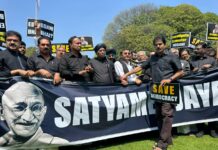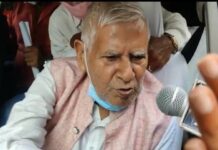In 2019, the Nobel Peace Prize was awarded to Ethiopia Prime Minister Abiy Ahmed for his role in addressing the conflict between his country and neighboring Eritrea.
Last year, the two countries entered into a number of agreements, which was considered to signal the end of hostilities that has plagued them for decade. Notably, the two countries have entered into a series of economic agreements, which would facilitate trade and investment, leading some to feel that the Nobel Peace Prize was more for the ending of trade blocks, then for peace.
In this article, we explore the history of the conflict between these two countries.
While home to a number of ethnic groups and tribes, four regionally concentrated groups have a strong presence in the region. They are the Somali, (Eastern Ethiopia and Somalia), Oromo (South and Central Ethiopians), the Tigrayans (Northern Ethiopians and Eritreans), Tigres (Eritrea) and the Ahmarans (North of Central Ethiopia). In terms of population, Oromo and Amarans make up nearly a third of Ethiopia. The Tigrayans make up over half of the Eritrean population. More Tigrayans live in Ethiopia, but, as Ethiopia is much larger than Eritrea, they make up only about a sixteenth of the population. Tigres make up nearly a third of Eritrea. The rest of both countries are made up of smaller ethnic groups, amounting to not much more than 5% of the population each.

Ethiopia was ruled by the Solomonic dynasty, who claimed to be descendants of the Biblical King Solomon and Queen Sheba. The Kingdom ruled from 1270 until the modern age. Though there were struggles and the occasional break, the kingdom ruled the general area of Ethiopia and entered into agreements with the colonial powers of England, France, and Italy regarding borders during the infamous Scramble for Africa. The Scramble for Africa began in 1884 when the European powers drew up an agreement on how to divide Africa between them for conquest. Ethiopia was to go to Italy. Italy was successfully repelled after they attacked Ethiopia. The two countries eventually entered into the infamous Treaty of Wuchale in 1889 where Ethiopia would recognize Italy’s claims in Africa, including modern-day Eritrea, in return to military and economic support. Italy saw this as a way of establishing Ethiopia as a protectorate, while Ethiopia saw this as an agreement for mutual benefit. When Italy attempted to establish political dominance through this deal, the Ethiopians fought them off.
For the beginning part of the twentieth century, Italy controlled Eritrea, while Ethiopia remained independent. This continued until Italy conquered Ethiopia in the lead up to World War II. When Ethiopia became free, following the end of World War II, Eritrea (then Italian Abyssinia), was given to Ethiopia by the UK.
Initially, the kingdom of Ethiopia acknowledged that Eritrea had a separate national identity, and established the Ethiopian and Eritrean Federation. Eritrea retained political autonomy, but this lasted only 10 years after Eritrea was annexed. This led to 40 years of struggle against the Ethiopian state. These struggles continued even through the overthrow of the emperor by the Marxist-Leninist Derg forces. (Derg is Amharic for Committee)
Derg led to many reforms in Ethiopia during the 1970s, including increased spending on education and healthcare, land reforms, and the abolition of the monarchy. The Derg was a Soviet ally. Ethiopia was plunged into the middle of the Cold War proxy war, with an escalation of violence after the takeover. A number of groups were backed by enemies of the Soviet Union, including the United States and China. People and resources were organized on ideological and ethnic lines.

In Eritrea, the war was fought, both against Ethiopian control and between Eritrean liberation groups. Some of the largest groups in the conflict were American-backed Eritrean Liberation Front (ELF), and the radical left Eritrean People’s Liberation Front (EPLF). The conflict raged large, spilling into neighborliness Sudan. The ELPF defeated the ELF, and would eventually form the government of Eritrea after its independence.
ELPF’s strength lay in its alliance with the Tigrayan’s People’s Liberation Front (TPLF), who organized Tigrayan peasantry. The peasantry was resentful of the growing presence of the Ethiopian military and would organize guerilla tactics to fight them.
Also read: Zimbabwe – Freedom with Strings
This period was riddled with disaster for Ethiopia, with a famine killing a million people, escalation of violence which killed half a million more, tens of thousands being detained by the Derg government without trial, declining support from the Soviet Union, and an economy getting increasingly dependent on foreign aid to manage these disasters. The Derg government fell in 1991, after which the people of Eritrea were given a UN-monitored referendum, which led to an overwhelming vote for independence. The ELF became the People’s Front for Democracy and Justice, and established a one-party state in Eritrea, while Ethiopia established a multi-party parliamentary state, which lasts until today.
The border between the two new countries, unfortunately, was ambiguous. The two countries agreed to the border between the Ethiopian kingdom and Italian Abyssinia, but some territories remained in dispute. These territories were mostly Tigrayan majority areas, and this led to a series of wars lasting through the 1990s. In 1998, Eritrea invaded Ethiopia leading to the two-year Eritrean-Ethiopian war, where lakhs of people died.
In 2000, Ethiopia and Eritrea signed the Algiers Agreement which allowed the United Nation to settle the dispute. The United Nation established the Eritrea–Ethiopia Boundary Commission to resolve the border dispute. Ethiopia contested the conclusion of that Commission. Areas along the border remained contested territories, including a Tigrayan village of Badme. This led to a series of border-related violence that continued until 2018. Both countries accused each other of sponsoring terrorism and supporting separatist groups. Eritrea was internationally isolated when in 2009, the United Nations imposed sanctions against the country for its role in the Somalian conflict.
In July 2018, Ethiopia agreed that Badme was rightfully the property of Eritrea, and the two countries harbored a number of deals that fostered a positive relationship going forward. The focus on Badme might be misleading, as the border is still very violent, and the deal focuses on trade, transport, and investment-related issues. Sanctions against Eritrea were also lifted when Ethiopia took up Eritrea’s case.
The history of this conflict can be taken as a cautionary tale of how violence perpetuated by the colonial legacy can sustain decades after formal agreements take place. It may also offer lessons on how agreements to overcome the burdens of the past work in a modern context. International borders have been determined by colonial conquest, and political structure is influenced by the international political economy. The people of Eritrea and Ethiopia have suffered due to a history of the famine, armed conflict, and international isolation. Principles of self-determination and cooperative diplomacy have been the only sources of relief for the countries, and the story is still unfolding.



























